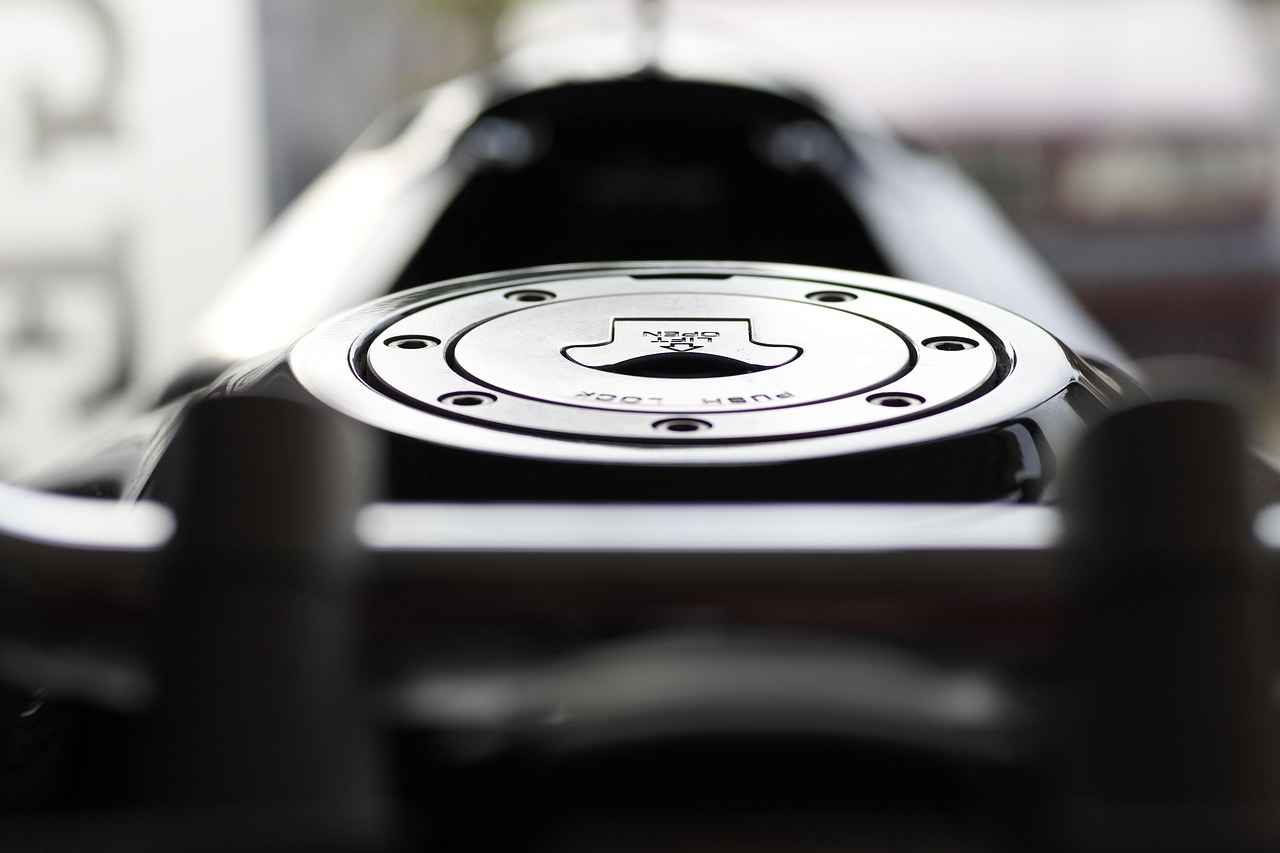This article delves into the various factors that influence the pricing of the Honda Civic, providing potential buyers with a comprehensive understanding of market trends, features, and comparisons. By the end, readers will be better equipped to make informed decisions regarding their purchase.
Factors Influencing Honda Civic Pricing
The pricing of the Honda Civic is affected by multiple factors, including:
- Model Year: Newer models often come with updated features and technology, impacting their price.
- Trim Levels: Different trims offer varying features and price points, allowing buyers to choose according to their needs.
- Optional Features: Customization options can significantly increase the overall cost of the vehicle.
Honda Civic Trim Levels Explained
Understanding the trim levels of the Honda Civic is crucial for potential buyers. The base model provides essential features at a lower price, while higher trims come with advanced technology and luxury options.
Base Model vs. Higher Trims
The base model of the Honda Civic includes standard features such as:
- Rearview camera
- Basic infotainment system
These features make it an economical choice for budget-conscious buyers. In contrast, higher trims offer luxury features like:
- Leather seating
- Premium audio systems
These enhancements significantly increase the price but elevate the driving experience.
New vs. Used Honda Civic Prices
When considering a Honda Civic, comparing new and used models reveals substantial price differences. New cars typically depreciate quickly, often losing a significant portion of their value within the first few years. This makes used models a more affordable option.
Purchasing a used Honda Civic can provide considerable savings, often allowing buyers to access higher trims or features for a lower price than a new base model.
Market Trends Affecting Prices
Current market trends, including supply chain issues and demand fluctuations, can greatly impact Honda Civic pricing. Supply chain disruptions may lead to limited inventory, driving prices up. Additionally, high demand for fuel-efficient vehicles like the Honda Civic can result in increased prices.
Comparing Honda Civic with Competitors
To gauge the Honda Civic’s value, it is beneficial to compare it with competitors such as the Toyota Corolla and Mazda3. The Toyota Corolla offers similar features and pricing, making it a direct competitor. Evaluating both models can help buyers determine which vehicle best suits their needs.
On the other hand, the Mazda3 is recognized for its sporty handling and design. Analyzing the pricing and features of both the Mazda3 and Honda Civic can reveal the best value for consumers.

Factors Influencing Honda Civic Pricing
The price of the Honda Civic is influenced by a variety of factors that potential buyers should consider. Understanding these elements not only helps in gauging expected costs but also aids in making informed purchasing decisions. Below are the key aspects that play a significant role in determining the price of the Honda Civic.
- Model Year: The year of manufacture can greatly affect pricing. Newer models often come with updated technology and features, which can increase their value. Conversely, older models may be priced lower but might lack modern amenities.
- Trim Levels: The Honda Civic is available in various trim levels, each offering different features and capabilities. Higher trims generally include advanced technology, enhanced safety features, and luxury options, which contribute to a higher price.
- Optional Features: Optional features such as upgraded audio systems, navigation, and safety packages can significantly impact the overall price. Buyers should evaluate which options are essential versus those that are merely desirable.
- Market Demand: The automotive market can fluctuate based on demand for specific models. A high demand for the Honda Civic, particularly due to its reputation for reliability and fuel efficiency, can lead to increased prices.
- Condition of the Vehicle: For used models, the condition plays a crucial role. Vehicles with low mileage, a clean service history, and no accidents typically command a higher price than those with visible wear and tear.
- Geographic Location: Pricing can vary significantly based on location. Urban areas may see higher prices due to demand, while rural areas might offer more competitive pricing.
By considering these factors, buyers can better understand the pricing landscape of the Honda Civic, allowing them to make a more informed choice that aligns with their budget and preferences.

Honda Civic Trim Levels Explained
The Honda Civic is a popular compact car known for its reliability, fuel efficiency, and modern features. One of the key aspects potential buyers should consider is the variety of trim levels available. Each trim level comes with its own set of features and pricing, catering to different preferences and budgets.
The Honda Civic typically offers several trim levels, each designed to meet varying consumer needs. The primary trim levels generally include:
- Base Model: This entry-level trim offers essential features and is budget-friendly.
- Mid-Level Trims: These trims provide a balance of comfort and technology, adding features like enhanced audio systems and advanced safety options.
- Top-Tier Trims: The highest trims come loaded with luxury features such as leather upholstery, navigation systems, and premium sound systems.
The base model of the Honda Civic is designed to be economical, featuring standard options like a rearview camera and a basic infotainment system. This makes it an excellent choice for budget-conscious buyers who need reliable transportation without the frills.
In contrast, higher trims offer a wealth of additional features. For instance, advanced safety technologies, premium materials, and enhanced multimedia systems significantly elevate the driving experience. However, these upgrades come at a higher price point.
When selecting the right trim, it’s essential to assess your budget alongside the features that matter most to you. Consider factors such as:
- Your daily driving needs
- Desired technology and safety features
- Long-term ownership costs
By evaluating these elements, you can find a trim that aligns with both your financial constraints and lifestyle requirements.
Understanding the differences between the Honda Civic’s trim levels is crucial for making an informed purchase. Each option offers unique benefits, ensuring that there’s a Civic for every type of driver.
Base Model vs. Higher Trims
The Honda Civic is a popular choice among compact cars, known for its reliability, efficiency, and versatility. When it comes to pricing, potential buyers often find themselves weighing the benefits of the base model against the more luxurious higher trims. Understanding these options can significantly influence purchasing decisions.
The base model of the Honda Civic is designed for those who prioritize affordability and essential features. It typically includes a rearview camera, a basic infotainment system, and standard safety features, making it a practical choice for budget-conscious consumers. This model serves as an excellent entry point for first-time car buyers or those looking for a reliable daily driver without the frills.
On the other hand, the higher trims of the Honda Civic come equipped with a range of advanced technology and luxury options that can significantly enhance the driving experience. Features such as leather seating, premium audio systems, and advanced driver-assistance technologies are often included in these trims. While these additional features result in a higher price tag, they provide a more comfortable and enjoyable ride, appealing to buyers who value luxury and performance.
When considering the overall cost, it’s essential to evaluate how much value you place on these luxury features. Higher trims can offer a more refined experience, but they also require a larger investment. Therefore, potential buyers should carefully assess their priorities and budget before making a decision.
- Base Model: Economical choice with essential features.
- Higher Trims: Enhanced comfort and advanced technology.
- Cost Consideration: Balance between desired features and budget.
Ultimately, understanding the differences between the base model and higher trims of the Honda Civic can help buyers make informed decisions that align with their needs and financial situation.
Standard Features of the Base Model
The base model of the Honda Civic stands out as an excellent choice for those seeking a reliable vehicle without breaking the bank. This model is designed with the budget-conscious buyer in mind, offering a range of essential features that cater to everyday driving needs. One of the key highlights of the base model is its rearview camera, which enhances safety by providing drivers with a clear view of what’s behind them, minimizing the risk of accidents while reversing.
In addition to the rearview camera, the base model is equipped with a basic infotainment system. This system typically includes a touchscreen display, Bluetooth connectivity, and compatibility with smartphone integration applications, allowing drivers to stay connected while on the go. While it may not have all the bells and whistles of higher trims, it provides adequate functionality for most users.
Another important aspect of the base model is its fuel efficiency. The Honda Civic is renowned for its economical performance, and the base model is no exception. With impressive mileage, it helps drivers save money on fuel costs over time, making it a practical choice for daily commutes or long drives.
Furthermore, the base model often comes with essential safety features such as automatic emergency braking and lane-keeping assist, which enhance the overall driving experience and provide peace of mind for drivers and passengers alike.
Overall, the base model of the Honda Civic serves as a solid foundation for those looking for a dependable vehicle. Its combination of essential features, safety technologies, and fuel efficiency makes it a compelling option for anyone aiming to balance cost with functionality.
Luxury Features in Higher Trims
The Honda Civic is renowned for its versatility and reliability, but what truly sets it apart are the luxurious features available in its higher trim levels. These premium options not only enhance the aesthetic appeal of the vehicle but also significantly improve the overall driving experience.
When you opt for a higher trim level, you can expect a range of luxury features that elevate comfort and convenience. For instance, many of these trims come equipped with leather seating, which not only adds a touch of elegance but also provides superior comfort during long drives. The tactile feel of leather, combined with advanced ergonomic designs, ensures that both the driver and passengers enjoy a premium experience.
Additionally, higher trims often include premium audio systems that transform your driving environment. With high-fidelity sound quality, these systems allow you to enjoy your favorite music, podcasts, or audiobooks with clarity that standard systems simply cannot match. Imagine cruising down the highway with surround sound that makes you feel like you’re at a live concert; this is the kind of experience that higher trims aim to deliver.
Moreover, luxury features extend beyond just seating and sound systems. Many higher trims also offer advanced technology integrations such as navigation systems, smartphone connectivity, and enhanced safety features. These additions not only make driving more enjoyable but also contribute to a safer and more connected experience on the road.
While the price of these higher trim levels is undoubtedly higher, the investment can be justified by the added comfort, technology, and overall driving pleasure they provide. For those who prioritize a more luxurious driving experience, the benefits of upgrading to a higher trim level are clear and compelling.
Choosing the Right Trim for Your Budget
When it comes to purchasing a new Honda Civic, selecting the right trim level is a crucial step that can significantly impact your overall satisfaction with the vehicle. This decision requires careful consideration of your budget and the features that matter most to you. By understanding the various trim levels available, you can make an informed choice that balances cost with your desired functionalities.
The Honda Civic offers several trims, each equipped with different features and technologies. For instance, the base model provides essential amenities such as a rearview camera and a basic infotainment system, making it an excellent choice for those who prioritize affordability. On the other hand, higher trims come with luxurious options like leather seating, advanced safety features, and premium audio systems, which enhance the driving experience but also come at a higher price.
When evaluating your options, consider creating a comparison chart of the trims you are interested in. This can help you visualize which features are included at each level and how they align with your financial plan. Below is an example of a simple comparison table:
| Trim Level | Key Features | Price Range |
|---|---|---|
| Base Model | Rearview camera, basic infotainment | $22,000 – $24,000 |
| Mid-Level Trim | Upgraded audio, advanced safety features | $25,000 – $27,000 |
| High-End Trim | Leather seats, navigation, premium audio | $28,000 – $30,000 |
It’s also important to assess your priorities. If you value advanced technology and luxury, investing in a higher trim may be worthwhile. Conversely, if you are more budget-conscious and prefer to keep costs low, the base model could suffice. Ultimately, achieving a balance between your budget and the features you desire will lead to a satisfying purchase.
In conclusion, understanding the available trim levels and their corresponding features allows you to make a choice that fits both your financial situation and your lifestyle needs. Take your time to research and compare, ensuring that your decision aligns with your expectations for the Honda Civic.

New vs. Used Honda Civic Prices
When considering the purchase of a Honda Civic, one of the most significant decisions revolves around whether to buy new or used. Understanding the price differences between these two options is essential for effective budget planning.
The price of new Honda Civics can vary widely based on model year, trim level, and optional features. In contrast, used Honda Civics typically offer a more affordable entry point, with prices reflecting depreciation and market demand.
New cars, including the Honda Civic, tend to depreciate rapidly, often losing 20-30% of their value within the first few years. This rapid depreciation means that buying a used model can be a smart financial move, allowing buyers to acquire a vehicle that is just a few years old for a significantly lower price.
- Lower Initial Cost: Used Civics often come at a fraction of the price of new models, making them budget-friendly.
- Access to Higher Trims: Buyers can often afford higher trim levels with more features when purchasing used.
- Reduced Insurance Costs: Insurance premiums for used vehicles are generally lower than for new ones.
While used vehicles present numerous benefits, buying a new Honda Civic also has its advantages:
- Warranty Coverage: New vehicles typically come with manufacturer warranties, providing peace of mind.
- Latest Technology: New models feature the latest technology and safety features that may not be available in older models.
- Customization Options: Buyers can select their preferred trim and features, tailoring the vehicle to their specific needs.
Ultimately, the choice between a new and used Honda Civic should be based on individual budget constraints and personal preferences. By weighing the pros and cons of each option, buyers can make a more informed decision that aligns with their financial goals.
Understanding Depreciation Rates
The depreciation rate of a vehicle is a crucial factor that potential buyers should consider when making a purchase decision. For many, understanding how quickly a car loses value can significantly influence whether to buy new or used. In the case of the Honda Civic, like many new cars, the depreciation is often steep during the initial years of ownership.
New cars, including the Honda Civic, typically experience rapid depreciation, often losing as much as 20% to 30% of their value within the first three years. This phenomenon occurs due to several factors:
- Market Demand: New vehicles are in high demand, and as soon as a car is driven off the lot, it is considered a used vehicle, instantly decreasing its value.
- Model Year Changes: Automakers frequently release updated models, which can make previous versions less desirable.
- Condition and Mileage: New cars naturally start to accumulate mileage and wear, which contributes to a decrease in value.
As a result, many buyers find that opting for a used Honda Civic can be a more economical choice. By purchasing a vehicle that is a few years old, buyers can often enjoy significant savings while still acquiring a reliable and well-equipped car.
When considering the purchase of a used Honda Civic, buyers can benefit from:
- Lower Purchase Price: Used models are generally priced much lower than their new counterparts, allowing buyers to save money.
- Access to Higher Trim Levels: Buyers may find that they can afford a higher trim level with more features in the used market than they could if buying new.
- Reduced Insurance Costs: Typically, insurance premiums for used cars are lower, further enhancing the affordability of owning a used vehicle.
In conclusion, understanding depreciation rates is essential for making an informed decision when purchasing a Honda Civic. By weighing the benefits of buying used against the rapid depreciation of new cars, consumers can find the best option that fits their budget and needs.
Benefits of Buying Used
When considering the purchase of a vehicle, many buyers find themselves weighing the advantages of new versus used options. Among the most popular choices in the used car market is the Honda Civic. This compact car has built a reputation for reliability, efficiency, and affordability, making it a prime candidate for budget-conscious consumers.
Substantial Savings are one of the most compelling reasons to consider a used Honda Civic. Typically, used vehicles depreciate significantly in the first few years, allowing buyers to access models that are only a few years old at a fraction of the original price. This means that you can often find higher trim levels or models with more advanced features for the same price as a new base model.
| Feature | New Base Model | Used Higher Trim |
|---|---|---|
| Price | $22,000 | $20,000 |
| Infotainment System | Basic | Upgraded |
| Seating Material | Cloth | Leather |
Moreover, buying used does not mean sacrificing quality. Many used Honda Civics are still under warranty, and certified pre-owned options provide added peace of mind with thorough inspections and extended warranties. This can be particularly beneficial for first-time buyers or those unfamiliar with car maintenance.
- Access to Advanced Features: Higher trims often include features such as advanced safety systems, premium audio, and enhanced connectivity options.
- Lower Insurance Costs: Generally, used cars have lower insurance premiums compared to new vehicles, which can lead to further savings.
- Environmental Impact: By choosing a used vehicle, you contribute to reducing waste and resource consumption associated with new car production.
In summary, purchasing a used Honda Civic not only offers substantial financial savings but also the opportunity to enjoy a higher level of luxury and features that may otherwise be out of reach with a new base model. With careful research and consideration, buyers can make a well-informed decision that aligns with their needs and budget.

Market Trends Affecting Prices
The automotive market is a dynamic landscape, particularly for popular models like the Honda Civic. Understanding the current market trends is essential for potential buyers looking to make an informed purchase. Factors such as supply chain issues and demand fluctuations play a crucial role in determining the pricing of the Honda Civic.
Recent global events have led to significant supply chain disruptions, affecting the availability of vehicles. For instance, shortages in semiconductor chips have limited production capabilities, resulting in fewer units being available for sale. This limited inventory often drives prices upward, as dealerships capitalize on the scarcity of new models. Buyers should be aware that these conditions can lead to higher prices for both new and used Honda Civics.
The demand for vehicles, particularly fuel-efficient models like the Honda Civic, can fluctuate based on various factors, including fuel prices and consumer preferences. When gas prices rise, consumers tend to gravitate towards fuel-efficient vehicles, increasing demand for the Civic. This heightened demand can result in price increases, making it essential for buyers to monitor market trends closely.
- Stay Informed: Regularly check automotive news and market reports to understand current pricing trends.
- Timing Your Purchase: Consider waiting for seasonal sales or promotions, which can often provide better pricing.
- Negotiate: Be prepared to negotiate with dealers, especially in a fluctuating market.
By staying informed about market trends and understanding the factors that influence pricing, potential buyers can navigate the complexities of purchasing a Honda Civic more effectively. This knowledge empowers them to make choices that align with their budget and preferences.
Impact of Supply Chain Issues
In today’s automotive market, the has become increasingly significant. As manufacturers face disruptions, the availability of vehicles, including popular models like the Honda Civic, has been affected. These disruptions can lead to limited inventory, which in turn drives prices up, creating a ripple effect throughout the market.
Understanding the dynamics of supply chain disruptions is essential for potential buyers. When manufacturers encounter challenges such as shortages of raw materials or logistical delays, the production rate of vehicles decreases. This limited supply can result in higher prices for consumers, as dealerships may raise prices due to the scarcity of available models.
Moreover, the increased demand for vehicles, especially in a recovering economy, exacerbates the situation. As buyers compete for a reduced number of vehicles, prices naturally rise. This phenomenon is particularly evident in the case of the Honda Civic, which is known for its reliability and fuel efficiency, making it a sought-after choice among consumers.
To navigate these challenges effectively, buyers should stay informed about current market trends and potential price increases. Monitoring industry news, dealership inventories, and economic indicators can provide valuable insights into when to make a purchase. For instance, if a buyer notices a trend of rising prices due to supply chain issues, it may be wise to act quickly before costs escalate further.
Additionally, considering alternative options, such as certified pre-owned vehicles, can be a strategic move. These options often provide a balance between quality and cost, especially in a market where new vehicle prices are climbing.
In summary, understanding the on vehicle pricing is crucial for making informed purchasing decisions. By being aware of market trends and acting strategically, buyers can mitigate the effects of limited inventory and rising prices.
Demand Fluctuations in the Automotive Market
The automotive market is constantly evolving, with various factors influencing the demand for vehicles. One significant aspect to consider is the demand fluctuations that can affect pricing, particularly for popular models like the Honda Civic. Understanding these fluctuations is crucial for potential buyers looking to make informed decisions.
High demand for fuel-efficient vehicles has surged in recent years, driven by rising fuel prices and a growing emphasis on sustainability. The Honda Civic, known for its impressive fuel economy and reliability, has become a top choice among consumers. This increased popularity can lead to higher prices, especially during peak buying seasons, such as spring and summer when many consumers are looking to purchase new cars.
Monitoring market trends is essential for buyers. By keeping an eye on inventory levels and consumer demand, potential buyers can identify the optimal times to purchase a Honda Civic at a more competitive price. For instance, during periods of low demand, prices may stabilize or even decrease, providing an opportunity for buyers to save money.
Additionally, understanding the impact of external factors, such as economic conditions and changes in consumer preferences, can further enhance a buyer’s strategy. For example, if a new model is set to be released, the demand for the current Honda Civic may drop, leading to potential discounts.
In summary, the fluctuations in demand for vehicles like the Honda Civic can significantly influence pricing. By staying informed about market trends and understanding the factors that drive demand, buyers can make smarter purchasing decisions and potentially save a substantial amount on their investment.

Comparing Honda Civic with Competitors
When it comes to choosing a compact car, the Honda Civic stands out in a crowded market, but how does it stack up against its competitors, such as the Toyota Corolla and Mazda3? Understanding the differences in pricing, features, and overall value can significantly influence a buyer’s decision.
The Toyota Corolla is often seen as a direct competitor to the Honda Civic, with both vehicles offering similar pricing structures. Typically, the Civic may have a slightly higher starting price due to its advanced technology and performance features. However, the Corolla is known for its reliability and fuel efficiency, making it a strong contender. Buyers should consider:
- Initial Cost: Compare the base model prices and available trims.
- Fuel Economy: Both vehicles are fuel-efficient, but slight variations may impact long-term costs.
- Resale Value: Research how each model holds its value over time.
The Mazda3 is celebrated for its sporty handling and aesthetic appeal, which can attract buyers looking for a more engaging driving experience. However, the Civic offers a well-rounded package with its robust safety features and interior quality. Key aspects to consider include:
- Driving Experience: While the Mazda3 provides a sportier feel, the Civic focuses on comfort and stability.
- Interior Quality: Both vehicles have high-quality interiors, but the Civic often includes more standard features at a lower price.
- Technology Offerings: Evaluate the infotainment systems and driver assistance features of both models.
Ultimately, comparing the Honda Civic with competitors like the Toyota Corolla and Mazda3 offers potential buyers a clearer understanding of where the Civic fits within the automotive landscape. By examining pricing, features, and overall value, consumers can make more informed decisions tailored to their specific needs and preferences.
Price Comparison with Toyota Corolla
The Honda Civic and Toyota Corolla are two of the most popular compact cars on the market, each with a loyal following. When it comes to pricing, both models offer competitive options that cater to various budgets and preferences. Understanding the nuances between these vehicles can significantly aid potential buyers in making an informed decision.
The Toyota Corolla presents a strong challenge to the Honda Civic, as both vehicles are priced similarly and offer a range of features that appeal to budget-conscious consumers. When comparing the two, buyers should consider several critical factors:
- Base Price: The starting price for both the Honda Civic and Toyota Corolla is often within a few hundred dollars of each other, making them direct competitors in the compact car segment.
- Trim Levels: Both models come in various trims, with the Honda Civic typically offering more performance-oriented options, while the Corolla emphasizes reliability and fuel efficiency.
- Standard Features: The base model of the Civic includes several advanced technology features that may not be standard in the Corolla, such as a more comprehensive infotainment system and additional driver-assistance technologies.
Additionally, potential buyers should evaluate the long-term costs associated with each vehicle. The Honda Civic often retains its value better over time, which can translate to lower depreciation rates compared to the Corolla. However, the Corolla is renowned for its reliability and fuel efficiency, which can lead to lower overall ownership costs.
Ultimately, the decision between the Honda Civic and Toyota Corolla should be based on personal preferences regarding features, driving experience, and budget considerations. Both cars offer excellent value, but understanding the specific advantages of each can help buyers find the perfect fit for their needs.
Honda Civic vs. Mazda3: A Value Analysis
The Honda Civic and Mazda3 are two of the most popular compact cars on the market, each with its unique appeal. While the Civic is recognized for its reliability and spacious interior, the Mazda3 stands out for its sporty handling and stylish design. However, potential buyers often wonder how their pricing compares, and which offers the best value for money.
When considering the price of the Honda Civic, it is essential to look at various factors such as model year, trim levels, and available features. The base model typically starts at a competitive price point, making it accessible for budget-conscious buyers. In contrast, the Mazda3, while slightly more expensive, offers a more premium feel and a sporty driving experience.
Both vehicles offer multiple trim levels that can significantly affect their pricing. The Honda Civic has several trims, from the economical base model to the high-end Touring trim, which includes advanced features like a premium audio system and enhanced safety technology. On the other hand, the Mazda3 also provides various trims, with the higher-end models showcasing luxury features such as leather upholstery and advanced infotainment systems.
- New Models: New Honda Civics and Mazda3s come with warranties and the latest technology but depreciate quickly.
- Used Models: Buying a used model can be cost-effective, allowing buyers to access higher trims at lower prices.
Current market conditions, such as supply chain disruptions and fluctuating demand for compact cars, can influence the prices of both the Honda Civic and Mazda3. Staying informed about these trends can help buyers make timely decisions.
Ultimately, the choice between the Honda Civic and Mazda3 will depend on individual preferences and budget constraints. While the Civic may offer a lower entry price, the Mazda3’s premium features and performance may justify its higher cost for some buyers. Analyzing both options thoroughly can lead to a more informed purchasing decision.
Frequently Asked Questions
- What factors influence the price of a Honda Civic?
The price of a Honda Civic is influenced by several factors including the model year, trim levels, optional features, and current market trends. Understanding these factors can help you gauge what to expect when shopping.
- How do I choose the right trim level for my budget?
Choosing the right trim level involves balancing your budget with the features you value most. The base model offers essential features at a lower price, while higher trims provide luxury options that enhance your driving experience.
- Is it better to buy a new or used Honda Civic?
Buying a used Honda Civic can often be more affordable due to depreciation rates. While new cars lose value quickly, used models can provide significant savings, allowing you to access higher trims for less.
- How do market trends affect Honda Civic prices?
Current market trends, such as supply chain issues and fluctuating demand, can significantly impact Honda Civic pricing. Staying informed about these trends can help you make a more strategic purchase.
- How does the Honda Civic compare to its competitors?
The Honda Civic competes with models like the Toyota Corolla and Mazda3. Comparing features and prices among these vehicles can help you find the best fit for your needs and budget.



